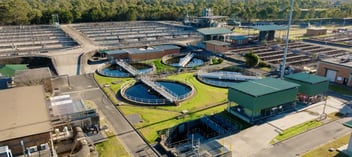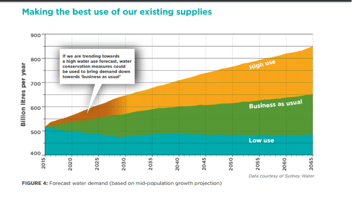Sydney Water and UNSW collaborate to locate leaks
As Greater Sydney dam levels fall to 52.4%, Sydney Water is aiming to save every last drop with a new leak detection trial.
About 10% of water is lost daily from Sydney Water’s mains. To help address this, the utility is funding a trial that will see University of New South Wales (UNSW) Professor Francois Ladouceur and partners Thales Underwater Systems and Zedelef test whether their optical sonar array technology can accurately find leaks in its pipes.
Ladouceur, from UNSW’s School of Electrical Engineering and Telecommunications, described the sonar array as “like a 50-metre strip of garden hose with 16 microphones inside it, equally distributed along its length”.
“These microphones detect the smallest of sounds, and we use a single optical fibre to send all this information back to dedicated software that computes where a leak is located.”
The team confirmed the viability of their technology for ocean monitoring in a round of successful trials at Lake Macquarie last year.
For the Sydney Water trial, they will place the sonar array in a water main and then simulate a leak, which Ladouceur said they expect to be able to pinpoint accurately.
Sydney Water currently uses a variety of approaches to detect leaks across its 22,822 km pipe network, including monitoring rainfall and soil moisture levels, pipe inspections and acoustic listening devices. But such a large system means these approaches can be costly and hard to deploy.
“The incumbent acoustic approach requires copper wires running to and from each microphone, to physically connect to the data collection head-end, where computer software interprets the signals coming from the network,” Ladouceur said.
“This isn’t too bad if you only have a few microphones, but if you want an array over 100 microphones or more to cover a larger portion of the network, you’ll end up with a bundle of 200 wires, which will quickly become very expensive, heavy and unwieldy."
He said using optical technology means this bulky bundle of wires can be replaced with a cheaper, lighter and more durable single optical fibre.
The UNSW trial is part of a wider project led by the NSW Smart Sensing Network. This brings together five Australian universities to test emerging technologies that could proactively identify leaks and potential failures in water supply networks.
Ultimately, Ladouceur said he hopes the research will help develop next-generation leak detection at Sydney Water. This could include the design of a larger sonar array, or using robots to drag the arrays over vast distances through pipes.
He said the end goal would be to cover as much of the network as possible, preventing further water losses.
“If the economics work out, our technology could be laid down inside of all new pipes as they’re being built, and they will have permanent leak detection.”


